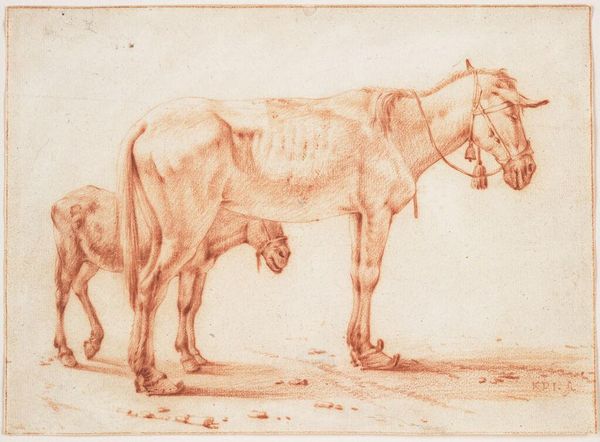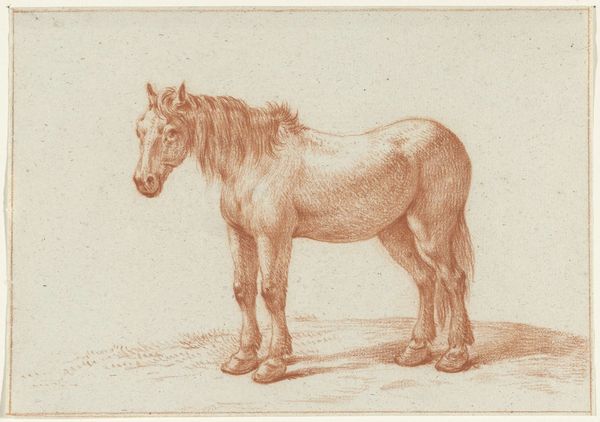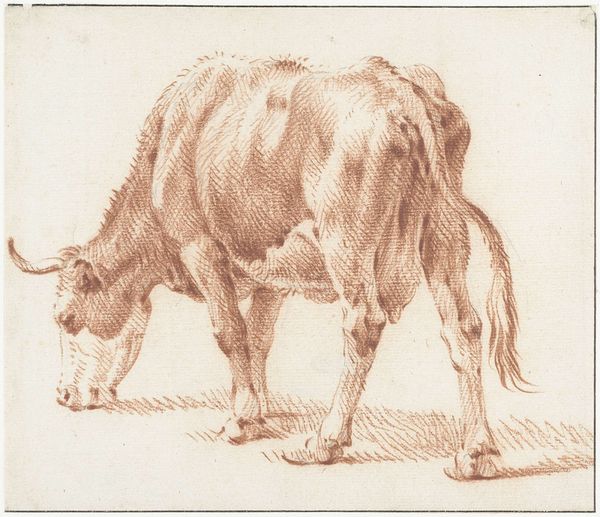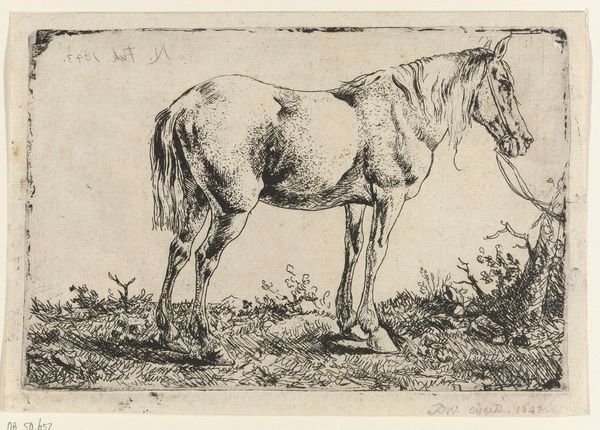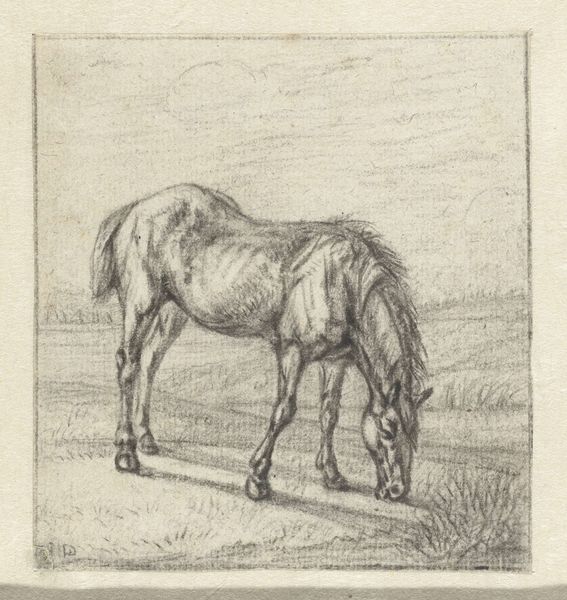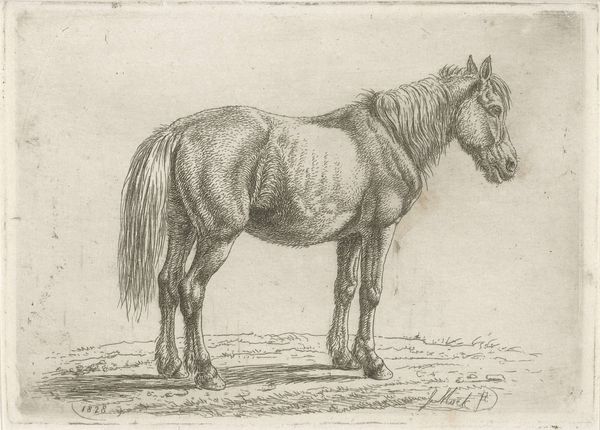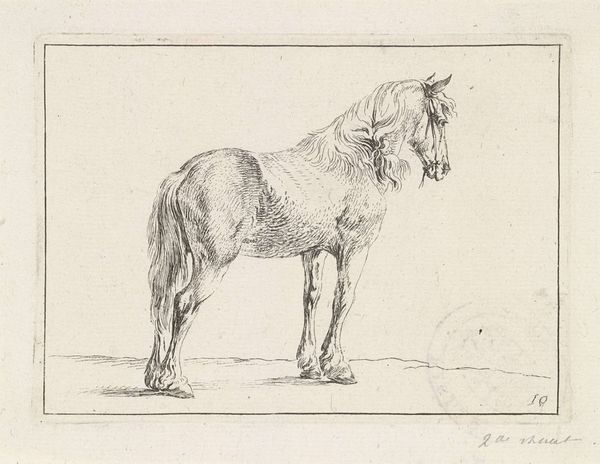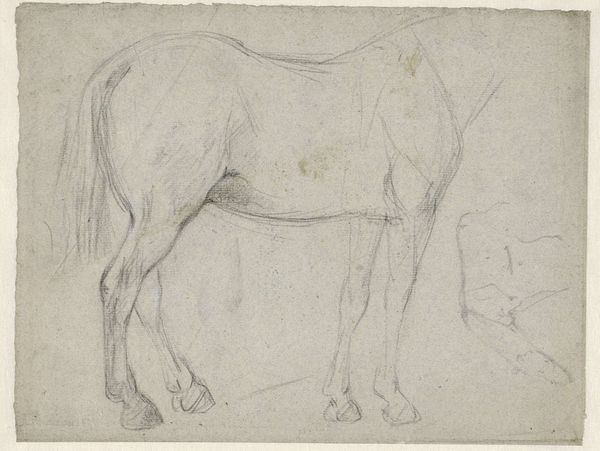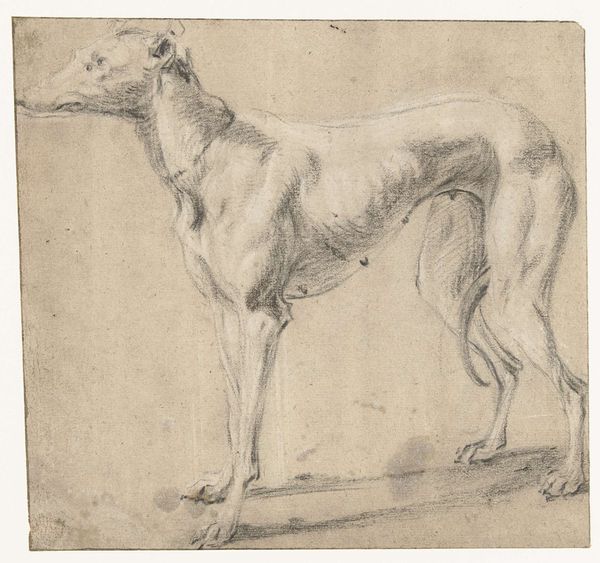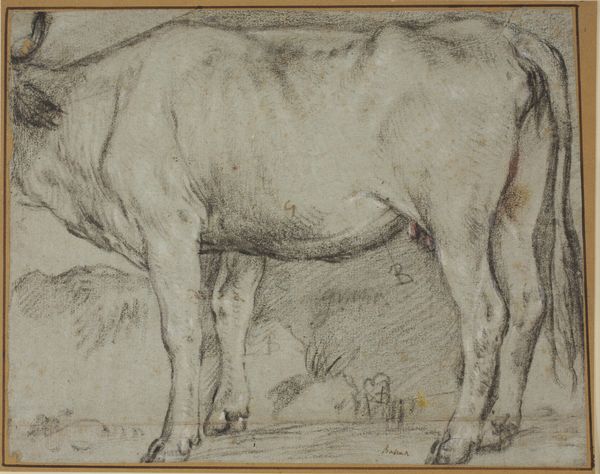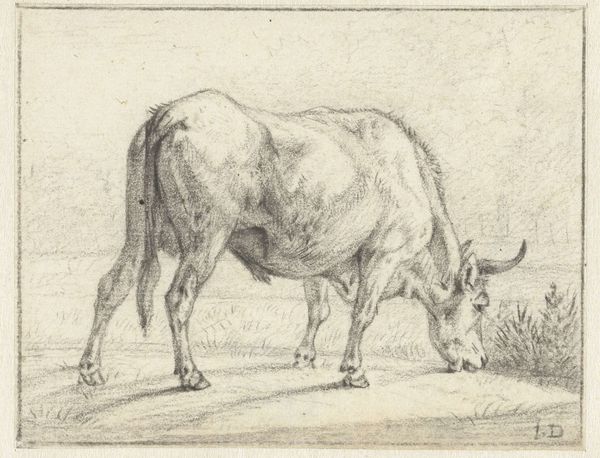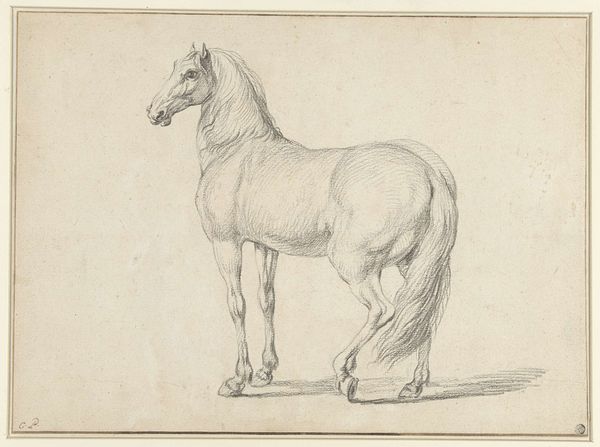
drawing, paper, pencil
#
drawing
#
animal
#
pencil sketch
#
landscape
#
etching
#
paper
#
pencil drawing
#
pencil
#
horse
#
realism
Dimensions: height 121 mm, width 157 mm
Copyright: Rijks Museum: Open Domain
Curator: What strikes me first about this drawing, "Staand paard, naar rechts" ("Standing horse, facing right"), created by Pieter van Bloemen between 1667 and 1720, is how humble it is. It's a study in pencil on paper. Very immediate. Editor: I feel its vulnerability right away. The horse seems weighted down, perhaps a bit melancholy. The ochre pencil lines lend it a somber, earthy quality, but they are delicate too. I sense some restraint, yet I also detect underlying tension. Curator: Consider the socioeconomic context in which this study was produced. Van Bloemen was highly regarded for his depictions of animals and landscapes, finding patronage among wealthy collectors. Drawings like this were not necessarily meant as finished artworks, but as functional commodities produced and sold in a vibrant artistic marketplace. They served as models for larger paintings or prints and a means of training or refining skills in portraying specific animal types and poses. Editor: Right. The very act of drawing, sketching, and observing, particularly a working animal like a horse, holds so many layers. In 17th-century Europe, the horse signified power and class, yet here we see the animal isolated, rendered as an object of study. I’m thinking about how deeply entwined human labor was with that of animals, each mutually exploited to the other. How much of that story exists here? Curator: Precisely! Van Bloemen carefully articulates the horse’s anatomy and musculature with those focused lines. There’s a clear demonstration of his skillful technique and observation but consider how that very technical skill translates to commodity value for sale. The quality of materials matters of course – this precise kind of laid paper was sought after - but, ultimately, it’s Van Bloemen’s talent that provides its value. Editor: Yes, it's about transforming that labor into art objects which become valued through networks of patronage and commercial exchange. This study isn't simply about a horse. It's about art intersecting with class, labor, and commodification. There's a tension between representing this animal as a neutral subject versus the cultural weight it carried. I still feel the sadness and that speaks to the weight and burden horses carried through centuries of history. Curator: Seeing this sketch through an examination of artistic production versus historical realities opens exciting questions. Thanks for helping unpack these questions for us today! Editor: Thank you. Looking at the social complexities allows this seemingly straightforward image to prompt conversations we would not have had otherwise.
Comments
No comments
Be the first to comment and join the conversation on the ultimate creative platform.

